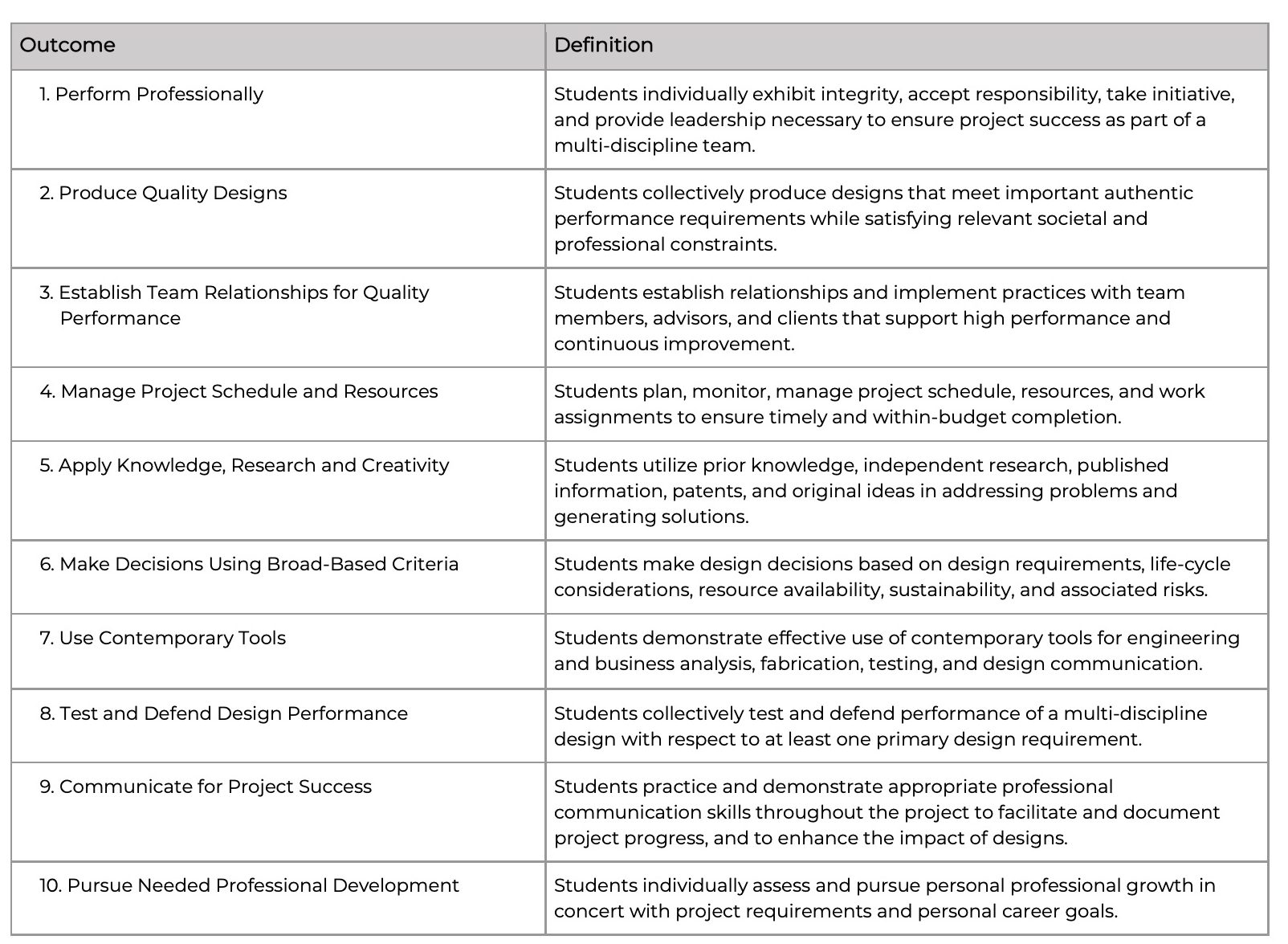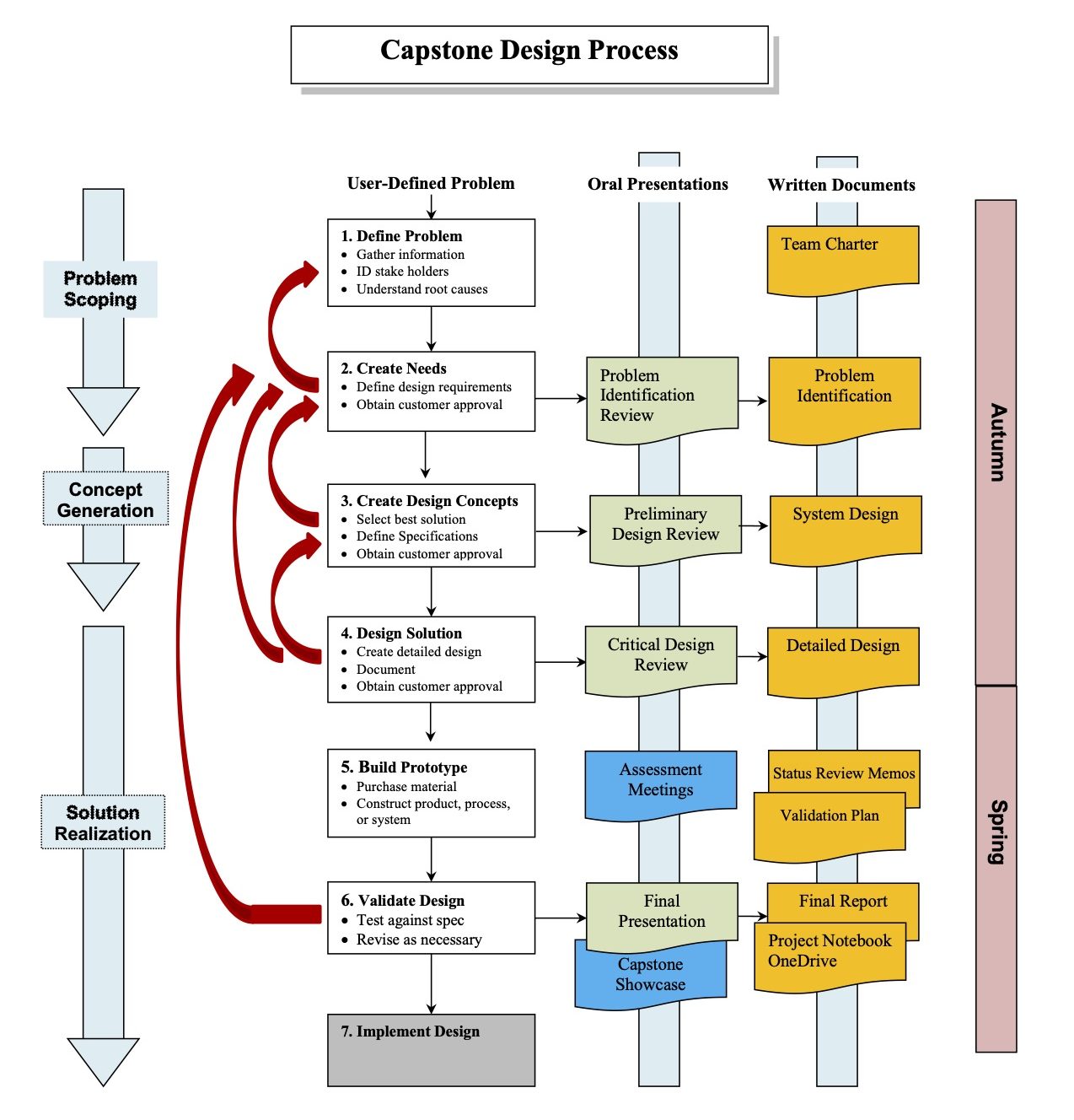Course Background & Learning Outcomes
Background and Objectives
Multidisciplinary Design Capstone course sequence was created: (1) to meet Accreditation Board for Engineering and Technology (ABET) requirements, (2) to satisfy the need for professional and productive engineers for industry and/or for universities or research labs seeking strong, independent researchers.
The College of Engineering continues to listen carefully to industry advisors and employers to provide continuous curriculum improvement. Almost universally, they ask that we better prepare our students to work on multidisciplinary teams, communicate professionally, and handle task and project management skills—all keys to solving practical design problems.
To meet these needs, we offer an optional year-long program that meets the needs of students and industry while satisfying ABET requirements for a broad array of engineering programs. This course begins by identifying industry partners, collaboratively defining an open-ended project scope, establishing mutually agreeable expectations, and selecting a cross-disciplinary team of students to solve the defined problem. As in any real-world environment, we find it optimal to assign multidisciplinary engineering teams supported by industrial designers, business students, occupational and physical therapists, and other disciplines to meet the objectives of the project. This aligns with the cross-functional teams engineers regularly work with in their careers.
One of the fundamental learning objectives is to incorporate the engineering design process and we focus a great deal on two key elements:
- Encouraging student teams to thoroughly research their problem to fully understand the root causes and the important needs of the end user.
- Carefully interviewing people and canvassing the literature leads to thorough problem identification, conceptual design ideas, and finally effective design solutions. Additionally, the course emphasizes user validation to ensure that the design solution—whether a system, process, or product—meets the original need.
Throughout the course, we teach professional skills associated with intellectual property protection, confidentiality, effective technical and professional communication strategies, entrepreneurial mindset learning (EML), business ethics, project management, teamwork, and resourcefulness. Understandably, attacking real-world problems with only three years of college education and minimal industry experience can be overwhelming for some students. We stress the application of engineering tools and knowledge acquired through their first years while encouraging students to stretch beyond their current knowledge and to reach out to other resources—faculty members, staff, and industry partners. And, overall, to make best use of all team members’ individual skills.
This guide includes an overview of the course, including descriptions of and helpful tips for major course deliverables. We use both formative and summative assessment methods to develop skills and provide necessary feedback. We include peer evaluations as inputs to formative assessment of individual growth and use summative assessments to measure teamwork effectiveness.
Regular team meetings, formal presentations, and site visits provide opportunities for professional communication among students, client, and faculty. At each critical juncture, teams present to clients to gain their approval to move to the next step of the project. And, finally, project documentation is a required component throughout the process, culminating in project log books, patent notebooks, and overall design documentation.
Learning Outcomes and Definitions
The goal of Multidisciplinary Design Capstone is to enhance student’s learning through authentic real world experiences. To meet this goal, the program focuses on the following learning outcomes:
Course Design Process
This flowchart captures the iterative process of the year-long capstone course sequence, as well as its major deliverables.

